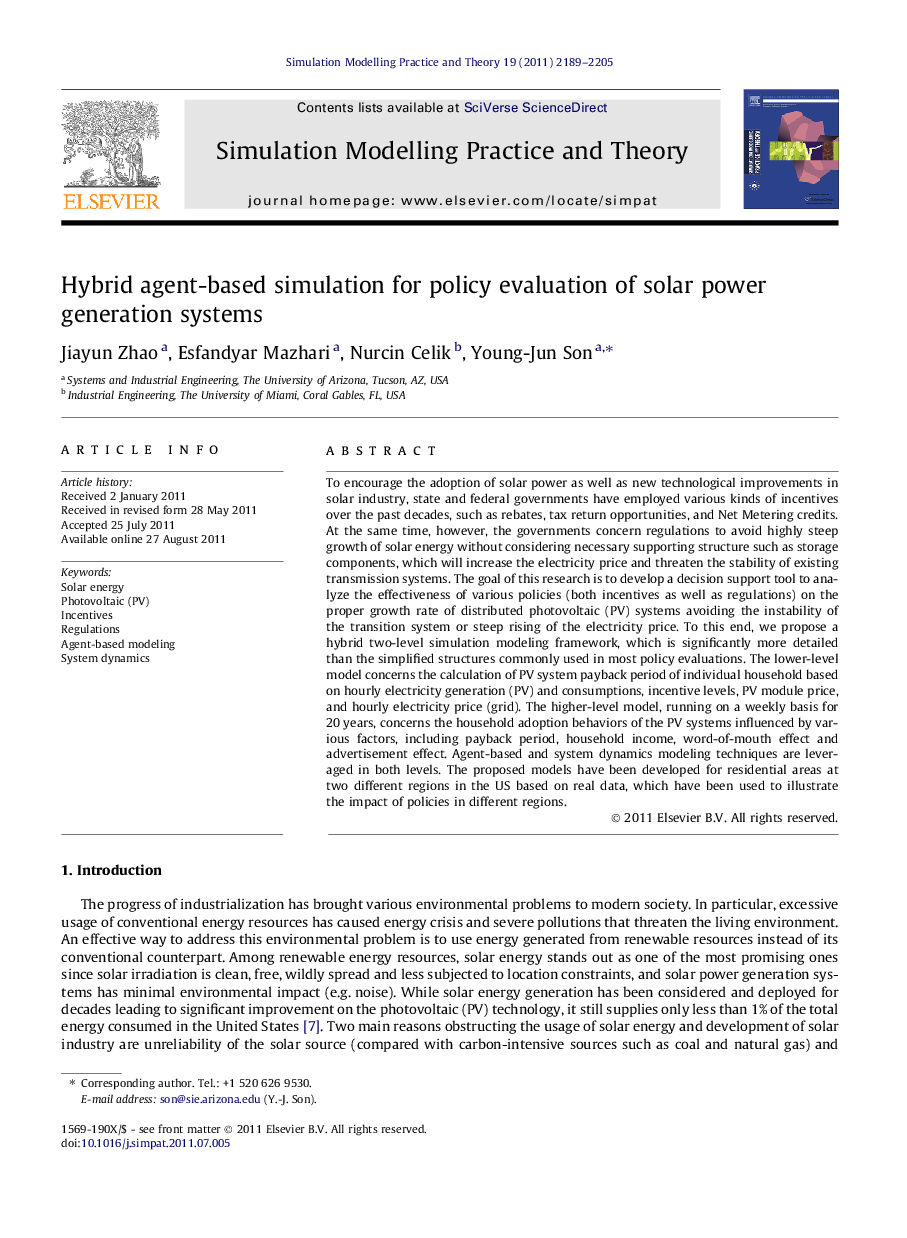| Article ID | Journal | Published Year | Pages | File Type |
|---|---|---|---|---|
| 492287 | Simulation Modelling Practice and Theory | 2011 | 17 Pages |
To encourage the adoption of solar power as well as new technological improvements in solar industry, state and federal governments have employed various kinds of incentives over the past decades, such as rebates, tax return opportunities, and Net Metering credits. At the same time, however, the governments concern regulations to avoid highly steep growth of solar energy without considering necessary supporting structure such as storage components, which will increase the electricity price and threaten the stability of existing transmission systems. The goal of this research is to develop a decision support tool to analyze the effectiveness of various policies (both incentives as well as regulations) on the proper growth rate of distributed photovoltaic (PV) systems avoiding the instability of the transition system or steep rising of the electricity price. To this end, we propose a hybrid two-level simulation modeling framework, which is significantly more detailed than the simplified structures commonly used in most policy evaluations. The lower-level model concerns the calculation of PV system payback period of individual household based on hourly electricity generation (PV) and consumptions, incentive levels, PV module price, and hourly electricity price (grid). The higher-level model, running on a weekly basis for 20 years, concerns the household adoption behaviors of the PV systems influenced by various factors, including payback period, household income, word-of-mouth effect and advertisement effect. Agent-based and system dynamics modeling techniques are leveraged in both levels. The proposed models have been developed for residential areas at two different regions in the US based on real data, which have been used to illustrate the impact of policies in different regions.
